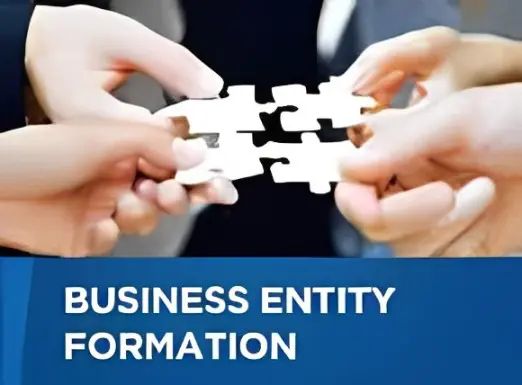
Richard Burt Professional Law Corporation
Mon - Fri: 9 AM - 6 PM
In communicating through a website with a lawyer you are thinking of hiring, you should not provide any confidential information concerning your legal matter until an attorney-client relationship has been formed.
Sending an email to Richard Burt or leaving a voice mail for him or his assistant (and a reply from either) does not create an attorney-client relationship.
No attorney-client relationship will be formed until you and Mr. Burt have agreed that he should represent you, he has determined that there is no conflict with an existing client, you have signed an engagement letter that sets forth the terms of the representation, and, when requested, you have made a fee deposit.
Please note that the initial consultation is solely to determine the nature of your legal matter and to discuss fees. Mr. Burt does not offer free legal advice.
After an attorney-client relationship has been formed, email (and voice mail) may of course be freely used for confidential attorney-client communications.
If we try to call you at a telephone number that you provide to us and are unable to reach you (and your voice mail is full or is not set up), we may text you at that number to let you know that we tried to call you. By sending an email via this website or by calling and leaving a voice-mail message, you consent to receiving such texts. At any time, you may reply STOP to opt-out from further messages.
NOTE: Mr. Burt does not handle litigation of any kind. If you wish to sue someone, are being sued, or need to make a court filing of any kind, Mr. Burt cannot help you. You should not contact him for those services.


Demise of the Notion That Alter Ego Claims Belong to the Bankruptcy Estate
Shaoxing County Huayue Import & Export v. Bhaumik
In Shaoxing County Huayue Import & Export v. Bhaumik (2011) 191Cal.App. 4th 1189, a creditor of a bankrupt corporation sued in state court to recover payment from an individual based on an alter ego theory of liability. The individual argued that the alter ego claim belonged to the bankruptcy estate because it alleged general injuries to the corporation that could establish a basis of liability for all corporate debts and therefore the claim did not belong to the creditor. The court disagreed, holding that the creditor’s claim against the individual as an alter ego for the bankrupt corporation was not the property of the bankruptcy estate and therefore could be pursued by the creditor.
The creditor was a vendor of goods who was owed over $291,000. The defendant was an individual who was the general manager. Whether he was a shareholder is not clear since the corporation may never have issued stock, but the court sometimes . The defendant appeared in the trial court (and on the appeal) in propria persona (never a good sign for the defense).
The allegations cited by the court showed classic signs of an alter ego case: The defendant’s deposition testimony revealed that he was the general manager of the defunct corporation, but he did not remember whether he had contributed any funds when he formed the corporation or whether the corporation had ever issued shares. He did not know whether the corporation had any directors, had by-laws or minutes, had a bank account, or had filed tax returns. The defendant acknowledged that the defunct corporation did not have the money to pay for goods purchased from the vendor. Although the court’s opinion on this point is not clear, presumably it meant that the corporation did not have the money to pay for goods purchased from the vendor at the time it ordered the goods since that would be a fact that would indicate that recognizing the corporation would promote an injustice.
The individual argued that the alter ego claim belonged to the bankruptcy estate because the alter ego claim could establish a basis of liability for all corporate debts, the recovery for which should be available to all creditors through the bankruptcy, and therefore, the state court action should be stayed. The trial court allowed the action to proceed to trial, however, and found that the individual defendant was liable to the creditor as the corporation’s alter ego.
In the published portion of the opinion, the court of appeal affirmed, concluding that the creditor’s action to hold the individual liable as an alter ego for a creditor’s substantive causes of action against a bankrupt corporation was not the property of the bankruptcy estate. In so holding, the court cited and followed Ahcom, Ltd. v. Smeding, the recent Ninth Circuit U.S. Court of Appeals decision (noted on this blog) as well as a number of cases that Ahcom cited.
Thus, the Ninth Circuit and a California court of appeal agree that an alter ego claim belongs to the creditor and is not an asset of the estate of a bankrupt corporation.
Comment
The alter ego doctrine is also known as “piercing the corporate veil.” Just because a creditor is able to establish grounds for a piercing claim, however, that does not mean that the corporation is not otherwise valid. One creditor of a defunct corporation or LLC may have the right to pierce the corporate veil while another creditor of the same entity might not. One of the pillars of a piercing claim is that it would promote an injustice not to treat the corporation as an alter ego of the owner. What is an injustice as to one creditor might not be as to another. It will therefore depend on the facts and circumstances.
Although a piercing or alter ego claim usually refers to holding a shareholder of a corporation liable for its debts, the fact that a corporation has never have issued stock does not preclude a court from finding that an individual involved in the business of a corporation is liable for its debts. Indeed, the failure to issue stock is routinely cited by courts as a factor tending to indicate that piercing is an appropriate remedy.
This case, along with Ahcom, Ltd. v. Smeding, puts the final nail in the coffin of the notion that alter ego claims against shareholders of corporations (or members of limited liability companies) belong to the bankruptcy estate. They don’t. The claims belong to the creditors, who are free to pursue them.



